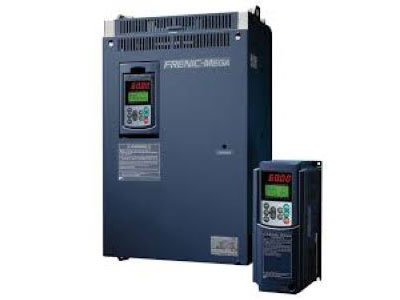Key Takeaway
A VFD is essential for several reasons. First, it saves energy by adjusting motor speed to the required level, which reduces power consumption. Second, it offers intelligent motor control, enhancing performance and extending the equipment’s lifespan. Third, VFDs reduce peak-current draw, minimizing electrical stress on the system. Common applications include controlling fans, pumps, and compressors, which make up 75% of all VFD uses globally. By optimizing motor operations, VFDs improve efficiency and reliability in industrial applications, making them a vital component in modern motor-driven systems.
The Necessity of VFDs in Modern Industry
Variable Frequency Drives (VFDs) have become a cornerstone in modern industry, offering unmatched control over motor speed and torque. They are essential for processes requiring precise speed adjustments and energy efficiency. Imagine a conveyor belt that needs to operate at different speeds based on the load. A VFD allows for smooth transitions, reducing mechanical stress and extending equipment life. Additionally, VFDs help in maintaining product quality by ensuring consistent operation, which is crucial in industries like food processing and pharmaceuticals.

Regulatory and Compliance Reasons
When you join the industry, understanding regulatory and compliance reasons for using Variable Frequency Drives (VFDs) is crucial. Governments and industry bodies are increasingly mandating energy efficiency and reduced emissions. VFDs are a practical solution for meeting these standards.
For instance, the Energy Independence and Security Act (EISA) in the United States sets specific energy efficiency requirements that VFDs can easily achieve. These regulations aim to reduce energy consumption and carbon emissions. By adopting VFDs, companies not only comply with these regulations but also avoid hefty penalties.
Moreover, compliance with such standards positions a company as a responsible and forward-thinking entity. It enhances the company’s reputation, demonstrating a commitment to sustainability and energy efficiency. This proactive approach can attract eco-conscious clients and investors, providing a competitive edge.
Adopting VFDs is not just about compliance; it’s about embracing a sustainable future. By understanding and implementing these technologies, you contribute to a greener and more efficient industrial landscape. Remember, regulatory compliance isn’t just a legal requirement; it’s a pathway to operational excellence and corporate responsibility.
You May Like to Read
Economic Benefits of Using VFDs
Economic benefits are a major incentive for incorporating Variable Frequency Drives (VFDs) into industrial operations. VFDs optimize motor performance and reduce energy consumption, leading to substantial cost savings. Imagine a manufacturing plant with multiple motors running continuously. Without VFDs, these motors operate at full speed regardless of the actual demand, wasting energy. By matching energy use to the load, VFDs significantly cut down electricity bills.
Moreover, the extended lifespan of motors due to reduced wear and tear results in lower maintenance costs. This further enhances the economic benefits. For example, instead of replacing motors frequently, maintenance intervals are extended, reducing downtime and repair costs. VFDs also improve process control, leading to better product quality and less waste.
Another key benefit is the reduction in peak energy demand charges. Since VFDs allow for smooth ramping up and down of motor speeds, they prevent the sudden surges in energy use that typically incur high charges.
Environmental and Sustainability Aspects
Understanding the environmental and sustainability aspects of Variable Frequency Drives (VFDs) is essential for modern industries. VFDs are pivotal in reducing energy consumption, directly contributing to lower carbon footprints and aligning with global sustainability goals. Industries face increasing pressure to minimize their environmental impact, and VFDs offer an effective solution.
Take HVAC systems, for instance. By adjusting fan and pump speeds to match the required levels, VFDs significantly cut down energy usage and associated emissions. This not only helps industries meet stringent environmental regulations but also supports broader corporate sustainability initiatives. Implementing VFDs enhances a company’s reputation by demonstrating a commitment to sustainability.
Imagine you’re overseeing an HVAC system. With VFDs, you can optimize energy use, resulting in considerable cost savings and a positive environmental impact. It’s a straightforward yet powerful way to align with global sustainability targets.
Technical Advantages of VFD Implementation
From a technical standpoint, the advantages of VFD implementation are numerous. VFDs offer superior control over motor speed, enhancing process precision and product quality. This precision is crucial in various industrial applications where maintaining consistent output is vital. Additionally, VFDs enable soft starting of motors, which significantly reduces inrush current and minimizes electrical disturbances in the network. This soft start feature is particularly beneficial in applications such as elevators and cranes, where smooth acceleration and deceleration are critical.
VFDs also play a key role in energy savings. By adjusting the motor speed to the specific needs of the process, VFDs ensure that energy is used efficiently, reducing operational costs. The ability to fine-tune motor speeds leads to less wear and tear on equipment, extending the lifespan of machinery and reducing maintenance costs.
Another significant advantage is the integration of VFDs with automation systems. This integration allows for real-time monitoring and control, enhancing operational efficiency and reliability. For instance, in a manufacturing setup, VFDs can adjust motor speeds based on load requirements, improving overall system performance and reducing downtime.
Conclusion
In conclusion, the need for VFDs in modern industry is clear and multifaceted. They offer crucial advantages in terms of operational efficiency, regulatory compliance, economic savings, environmental sustainability, and technical performance. For a newly joined engineer, understanding the importance of VFDs is essential as they play a vital role in optimizing industrial processes and supporting sustainable development. Embracing VFD technology not only ensures compliance with current standards but also prepares industries for future advancements and challenges, making VFDs indispensable in today’s industrial landscape.
